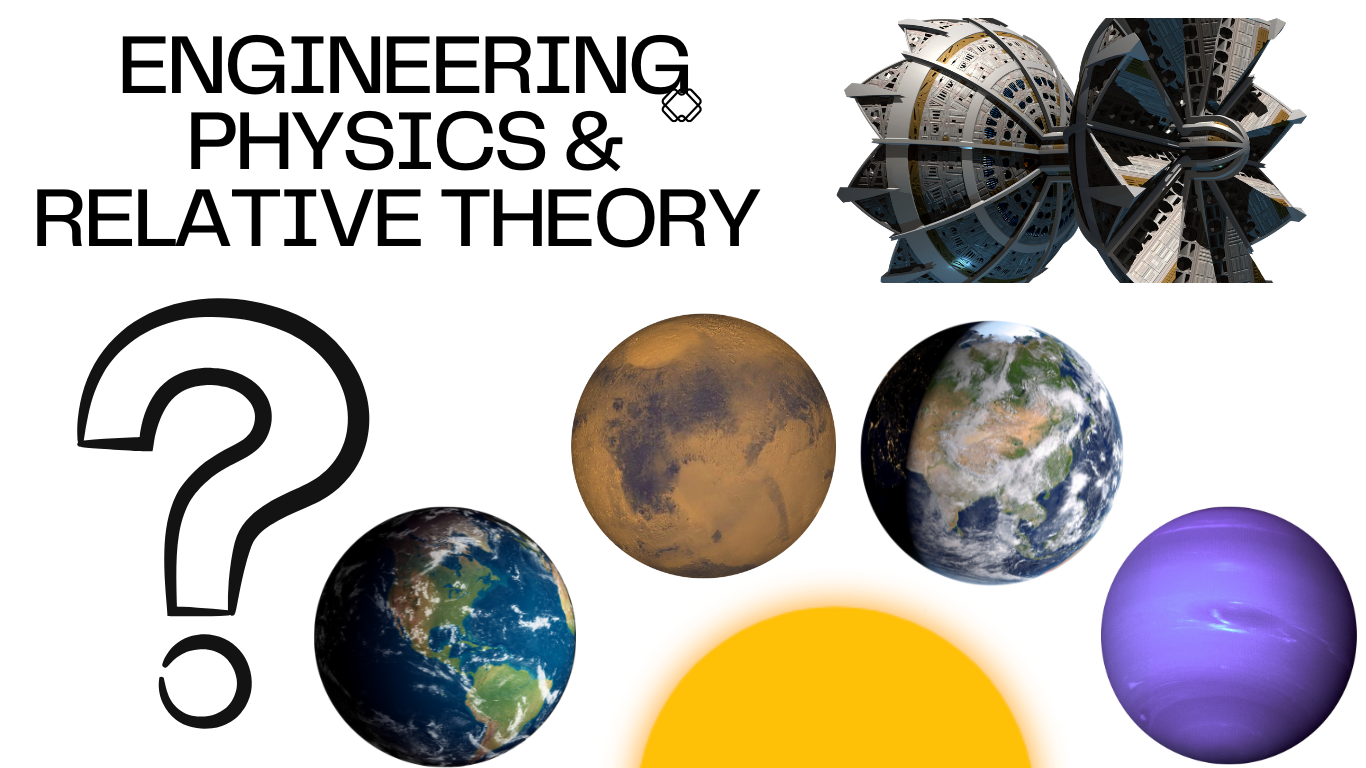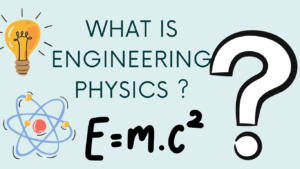- Introduction
- Explanation of Engineering Physics and its significance.
- Relevance of special relativity in engineering physics.
- Fundamentals of Special Relativity
- Albert Einstein’s Theory of Relativity
- Speed of Light and its constant nature
- Length Contraction
- What is Length Contraction?
- The mathematical formula for Length Contraction
- Real-world implications of Length Contraction
- Time Dilation
- What is Time Dilation?
- Time Dilation formula
- Effects of Time Dilation in high-speed travel
- Mass Contraction
- Introduction to Mass Contraction
- Relationship between Mass Contraction and Speed
- Mathematical expression of Mass Contraction
- Relativity in Engineering Applications
- The role of relativity in modern technologies
- GPS and Relativity
- Particle Accelerators and Relativity
- The Lorentz Transformation
- Understanding Lorentz Transformation equations
- How Lorentz Transformation affects time and space
- Relativistic Effects in Everyday Life
- Examples where relativistic effects can be observed
- Impact on high-speed vehicles and communications
- Quantum Mechanics and Relativity
- The connection between quantum mechanics and special relativity
- Challenges in combining both theories
- Applications of Length Contraction, Time Dilation, and Mass Contraction in Modern Science
- Use in nuclear physics
- Influence in high-energy particle physics
- Technological Implications
- How length contraction and time dilation affect technology
- The importance of considering relativistic effects in engineering designs
- Experimental Evidence
- Key experiments that confirmed length contraction and time dilation
- Verification of Einstein’s predictions in the real world
- Concepts in Mass Energy Equivalence
- E=mc² and its significance in engineering physics
- Relation between mass and energy in the universe
- Limitations and Challenges
- The limits of applying relativity in engineering
- Challenges in theoretical and experimental approaches
- Conclusion
- Recap of how relativity impacts engineering physics
- Future perspectives in engineering physics and relativity
Introduction
In the realm of engineering physics, concepts like length contraction, time dilation, and mass contraction are fundamental aspects rooted in Einstein’s special theory of relativity. These phenomena describe the behavior of objects moving at speeds close to the speed of light and can have profound implications for various scientific and technological applications. While these effects may seem like abstract concepts, their significance is felt in real-world technologies like GPS and particle accelerators, making them crucial to understand for any engineer or physicist working in high-speed or high-energy environments.
Fundamentals of Special Relativity
Before delving into the details of length contraction, time dilation, and mass contraction, it’s important to first understand the fundamental principles of special relativity. Proposed by Albert Einstein in 1905, special relativity asserts that the laws of physics are the same for all observers, regardless of their relative motion. A key takeaway from this theory is that the speed of light, denoted as ‘c’, is constant for all observers, irrespective of how fast the observer is moving.
Length Contraction
Length contraction refers to the phenomenon where an object in motion appears shorter in the direction of motion when observed from a stationary reference frame. This effect becomes more noticeable as an object approaches the speed of light. The mathematical formula for length contraction is given as:L=L01−v2c2L = L_0 \sqrt{1 – \frac{v^2}{c^2}}L=L01−c2v2
Where:
- L0L_0L0 is the original length of the object at rest.
- vvv is the velocity of the object.
- ccc is the speed of light.
This contraction is not observable at everyday speeds, but it becomes significant as the object’s velocity nears the speed of light.
Time Dilation
Time dilation is another cornerstone of special relativity. It describes how time appears to move slower for an object in motion relative to a stationary observer. The faster the object moves, the greater the time dilation. The formula for time dilation is:Δt=Δt01−v2c2\Delta t = \frac{\Delta t_0}{\sqrt{1 – \frac{v^2}{c^2}}}Δt=1−c2v2Δt0
Where:
- Δt0\Delta t_0Δt0 is the proper time (time experienced by the moving object).
- Δt\Delta tΔt is the dilated time (time observed from a stationary frame).
This effect is evident in high-speed travel, such as astronauts traveling through space. For them, time passes more slowly compared to people on Earth, leading to a phenomenon often called the “twin paradox.”
Mass Contraction
Mass contraction is a less well-known effect of special relativity, but it is equally important. As an object moves closer to the speed of light, its mass increases, and this phenomenon is referred to as relativistic mass increase. However, when dealing with mass contraction in relativity, it refers to the compression of mass as the velocity increases. The mathematical relationship can be expressed as:m=m011−v2c2m = m_0 \frac{1}{\sqrt{1 – \frac{v^2}{c^2}}}m=m01−c2v21
Where:
- m0m_0m0 is the rest mass of the object.
- mmm is the relativistic mass.
Relativity in Engineering Applications
While these concepts may seem abstract, they have practical implications in engineering and technology. GPS satellites, for example, must account for both time dilation due to their high velocities and gravitational time dilation due to their altitude. Without accounting for these relativistic effects, the system would be off by several kilometers.
In particle accelerators, such as the Large Hadron Collider (LHC), particles are accelerated to near-light speeds. At these speeds, both length contraction and time dilation become critical factors in ensuring the experiments yield accurate results.
The Lorentz Transformation
The Lorentz transformation equations describe how space and time coordinates change for an observer moving at a constant velocity relative to another observer. These transformations provide a mathematical framework to understand how time dilation, length contraction, and mass increase fit together within the theory of special relativity.
Relativistic Effects in Everyday Life
While we don’t see time dilation or length contraction every day, these effects become important in technologies such as GPS systems, where precise timing is crucial. Without adjustments for relativistic time dilation, satellite clocks would diverge significantly from Earth-based clocks over time.
Quantum Mechanics and Relativity
Combining quantum mechanics and relativity remains one of the greatest challenges in modern physics. While relativity explains the behavior of large objects traveling at high speeds, quantum mechanics governs the behavior of particles at microscopic scales. The two theories have yet to be unified into a single framework, but ongoing research in fields like quantum gravity aims to bridge this gap.
Applications of Length Contraction, Time Dilation, and Mass Contraction in Modern Science
Length contraction and time dilation play vital roles in many aspects of modern science. These effects are especially relevant in nuclear physics, where particles are often moving at relativistic speeds. Understanding these phenomena is crucial for designing experiments in high-energy particle physics, such as those conducted at CERN.
Technological Implications
In technological terms, engineers must consider relativistic effects when designing systems that involve high-speed motion or high-energy processes. For example, in the development of advanced propulsion systems or high-speed communication technologies, accounting for time dilation and length contraction can make a significant difference in system performance.
Experimental Evidence
Several experiments have confirmed the predictions of special relativity. For instance, particles moving close to the speed of light in particle accelerators exhibit time dilation, living longer than they would if at rest. Similarly, GPS satellites incorporate corrections for both time dilation and length contraction to maintain their accuracy.
Concepts in Mass-Energy Equivalence
One of the most famous equations in physics, E=mc2E=mc^2E=mc2, shows the relationship between mass and energy. This equation is not just theoretical—it’s the foundation for understanding nuclear energy and the functioning of nuclear reactors and bombs. It also has applications in high-energy physics experiments.
Limitations and Challenges
Despite the importance of relativity in modern science and engineering, it’s important to recognize its limitations. At low speeds, the effects of relativity are negligible, and classical mechanics provides a more accurate description of reality. Additionally, applying relativity in complex systems with multiple interacting objects can be mathematically challenging.



